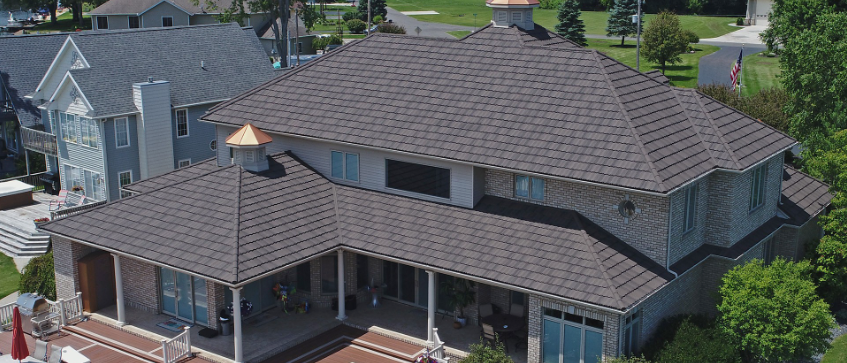
Residential roofing projects, whether new constructions or replacements, involve various risks that contractors must address to ensure safety, efficiency, and long-term structural integrity. One of the most critical aspects of managing these risks lies in CCR Mitigation. This concept encompasses all the strategies, practices, and tools that contractors use to reduce exposure to potential financial, legal, or physical damage during a roofing project. Understanding and implementing CCR mitigation in residential roofing not only protects contractors but also improves customer satisfaction and overall project success.
Understanding Construction Risk in Residential Roofing
Construction risk in the context of residential roofing refers to any potential event or condition that could negatively affect the outcome of a roofing project. These risks can stem from a variety of sources, including weather delays, faulty materials, design flaws, labor issues, or safety hazards. For roofing contractors, ignoring these risks can lead to costly repairs, insurance claims, project delays, or legal disputes.
Common risks in residential roofing include water intrusion due to improper flashing, material failure, worker injury, or inadequate ventilation causing long-term roof damage. Given the high liability associated with roofing work, especially when dealing with occupied homes, risk mitigation becomes an essential part of every contractor’s business model.
Why CCR Mitigation Is Critical in Residential Roofing
CCR mitigation is about being proactive rather than reactive. By planning ahead and implementing robust risk management strategies, contractors can minimize costly disruptions. In residential roofing, this involves everything from ensuring compliance with local building codes to selecting quality materials and hiring qualified labor.
The homeowner’s expectations are typically high, and residential roofing jobs often happen while the property is still inhabited. This means that contractors must take extra precautions to ensure the safety of both workers and residents, as well as the protection of personal property. Mitigating risk here is not just about protecting profits—it’s about maintaining trust and delivering a secure, durable roof.
Key Components of CCR Mitigation in Residential Roofing
-
Pre-Project Planning
Every successful mitigation strategy begins with careful planning. This includes performing a thorough site inspection, evaluating the existing roof structure, and identifying potential challenges such as drainage issues or mold. Planning also involves understanding the client’s expectations, budget, and timeline. Contractors should develop a detailed project plan that outlines key milestones, required permits, safety protocols, and contingency plans. -
Quality Material Selection
Choosing the right roofing materials is a vital risk mitigation step. Inferior materials may reduce upfront costs but can lead to premature failure, increased maintenance, and warranty issues. Reputable contractors work with trusted suppliers and choose materials that are durable, weather-resistant, and appropriate for the local climate. -
Trained and Certified Labor
The workforce plays a pivotal role in the outcome of any roofing project. Hiring trained and certified roofers ensures that the installation meets manufacturer standards and local codes. CCR mitigation also means ongoing training, safety refreshers, and staying updated on the latest roofing techniques and technologies. -
Job Site Safety and Compliance
Ensuring a safe working environment is central to risk management. Contractors should follow OSHA guidelines, provide proper fall protection, and conduct regular safety meetings. On-site hazards like open skylights, ladders, and electrical equipment must be clearly marked and monitored. Safety not only reduces the chance of injury but also minimizes downtime and legal exposure. -
Weather Contingency Planning
Roofing projects are particularly vulnerable to weather disruptions. Rain, snow, or extreme heat can all delay work or compromise quality. Effective residential roofing includes monitoring forecasts, scheduling work during optimal seasons, and having temporary waterproofing solutions in place if a project must be paused unexpectedly. -
Contract Clarity and Legal Protection
One of the most overlooked areas of CCR mitigation is the contract. A well-drafted contract outlines scope of work, materials to be used, project schedule, payment terms, warranty information, and dispute resolution methods. Clear communication and legal documentation help prevent misunderstandings and protect both parties in the event of a disagreement. -
Insurance and Warranty Coverage
Contractors should carry appropriate insurance coverage, including general liability, worker’s compensation, and roofing-specific policies. Additionally, offering a solid warranty gives homeowners peace of mind while reinforcing the contractor’s reputation. Ensuring that both the contractor’s and manufacturer’s warranties are valid involves proper installation and registration.
The Role of Technology in Risk Mitigation
Modern technology has become a powerful tool in the roofing industry. Drones, for instance, are used for initial roof inspections and progress tracking, reducing the need for risky climbs. Project management software helps streamline scheduling, material deliveries, and communication with clients. CRMs (Customer Relationship Management tools) and cloud-based documentation also ensure that all relevant records are safely stored and easily accessible.
Post-Installation Inspections and Customer Support
Once the roof is installed, a thorough post-installation inspection should be conducted. This step verifies that all elements are correctly installed and that the roof meets both local code and manufacturer requirements. Contractors should document the completed work and provide homeowners with a care and maintenance guide. Offering post-project support enhances customer trust and reduces the likelihood of callbacks or disputes.
Conclusion
CCR mitigation in residential roofing is not a one-size-fits-all solution, but rather a multi-faceted approach that covers every stage of a roofing project—from planning and material selection to installation and follow-up care. By prioritizing risk reduction strategies, roofing contractors not only protect themselves from financial loss and legal issues but also deliver safer, higher-quality results to homeowners.
Frequently Asked Questions (FAQ)
CCR Mitigation in Residential Roofing
Q1: What does CCR mean in residential roofing?
A: CCR stands for Contractor’s Construction Risk. In residential roofing, it refers to the potential risks and liabilities that roofing contractors face during a project. CCR mitigation involves taking steps to reduce or eliminate these risks through planning, safety, quality materials, contracts, insurance, and more.
Q2: Why is CCR mitigation important for roofing contractors?
A: CCR mitigation helps contractors avoid costly mistakes, legal issues, and job site injuries. It also ensures projects are completed safely, on time, and to a high standard. Proper mitigation builds trust with homeowners and protects a contractor’s reputation and bottom line.
Q3: What are the most common risks in residential roofing?
A: Common risks include:
-
Weather delays or damage
-
Poor installation practices
-
Use of substandard materials
-
Worker injuries
-
Water intrusion or leaks
-
Code violations or permit issues





